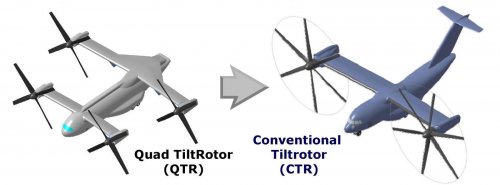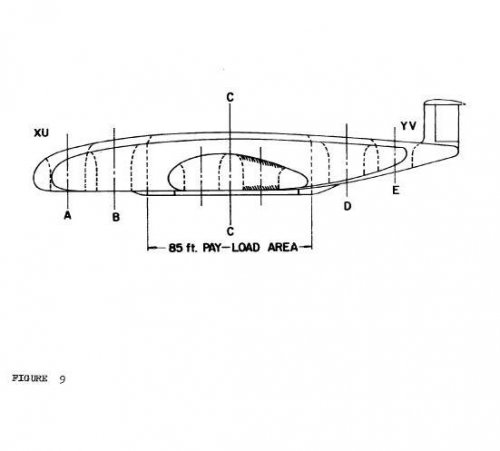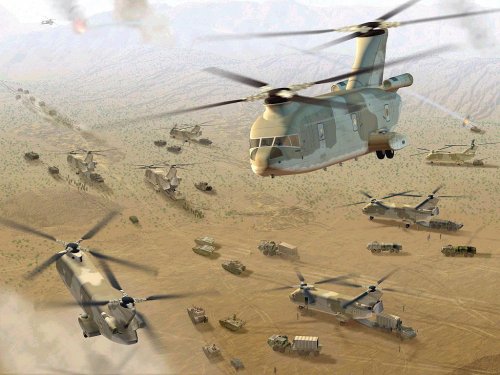You are using an out of date browser. It may not display this or other websites correctly.
You should upgrade or use an alternative browser.
You should upgrade or use an alternative browser.
US Joint Heavy Lift
- Thread starter yasotay
- Start date
fightingirish said:
Artist's impressions of Boeing Joint Common Air Lift System (JCALS) concepts.
Attachments
Attachments
- Joined
- 26 May 2006
- Messages
- 34,870
- Reaction score
- 15,733
Attachments
- Joined
- 27 May 2007
- Messages
- 676
- Reaction score
- 44
Stargazer2006 said:donnage99 said:
"If you have a sensation at this point that someone is using mind-altering chemicals, you are not alone"
ROTFL!!!! ;D
But quad-rotors are old hat, remember how successful X-19 was in the sixties already?
- Joined
- 18 October 2006
- Messages
- 4,208
- Reaction score
- 4,901
mz said:Stargazer2006 said:donnage99 said:
"If you have a sensation at this point that someone is using mind-altering chemicals, you are not alone"
ROTFL!!!! ;D
But quad-rotors are old hat, remember how successful X-19 was in the sixties already?
True but we should also remember that the X-22A was a very successful quad tilt rotor (albeit ducted rotors), that flew for many years.
- Joined
- 26 May 2006
- Messages
- 34,870
- Reaction score
- 15,733
Attachments
- Joined
- 26 May 2006
- Messages
- 34,870
- Reaction score
- 15,733
hesham said:
Hi,
here is Boeing Advanced Tandem Rotor Helicopter (ATRH).
http://www.dtic.mil/dtic/tr/fulltext/u2/a473069.pdf
Attachments
- Joined
- 3 June 2011
- Messages
- 18,328
- Reaction score
- 12,200
Nico said:I think that is a nice artist's impression of the future devolped Chinook. I found it on Google Image
Nico
See post #7 of this thread.
- Joined
- 26 May 2006
- Messages
- 34,870
- Reaction score
- 15,733
Attachments
- Joined
- 26 May 2006
- Messages
- 34,870
- Reaction score
- 15,733
Hi,
the Sikorsky VDTR Model concept.
http://ntrs.nasa.gov/archive/nasa/casi.ntrs.nasa.gov/20110008354_2011008607.pdf
the Sikorsky VDTR Model concept.
http://ntrs.nasa.gov/archive/nasa/casi.ntrs.nasa.gov/20110008354_2011008607.pdf
Attachments
donnage99
ACCESS: Top Secret
- Joined
- 16 June 2008
- Messages
- 1,355
- Reaction score
- 862
Same with Boeing ATT concept. Early ATT design even eliminates both horizontal and vertical tails altogetherKadija_Man said:Fin appears to be rather under-sized.
- Joined
- 9 October 2009
- Messages
- 21,944
- Reaction score
- 13,576
DSB Task Force on Future Need for VTOL/STOL Aircraft Final Report, July 2007
- Joined
- 1 April 2006
- Messages
- 11,375
- Reaction score
- 10,202
Hesham, please read what is JHL before posting stuff in this topic
http://www.secretprojects.co.uk/forum/index.php/topic,2765.msg12865.html#msg12865
What http://sagita.be has to do with FVL/JHL??
http://www.secretprojects.co.uk/forum/index.php/topic,2765.msg12865.html#msg12865
What http://sagita.be has to do with FVL/JHL??
- Joined
- 1 April 2006
- Messages
- 11,375
- Reaction score
- 10,202
Once more, read what is JHL that started in 2005!!!hesham said:Sorry my dear Flateric,I fixed it.
- Joined
- 26 May 2006
- Messages
- 34,870
- Reaction score
- 15,733
flateric said:Once more, read what is JHL that started in 2005!!!
OK my dear Flateric,please transfer it into a proper topic.
Going through this thread I noticed no videos although one had been posted but with a broken link. Despite program cancellation, the desire for a heavy vertical lift capacity with theater sized range still exists. Unfortunately, it would take a self funded prototype to demonstrate actual benefits before any budget/political support could be generated (as a follow on extension to Future Vertical Lift perhaps).
https://www.youtube.com/watch?v=pwq69KsaRn8
https://www.youtube.com/watch?v=DJovLfFmOB4
https://www.youtube.com/watch?v=bix4ptq3Who
https://www.youtube.com/watch?v=pwq69KsaRn8
https://www.youtube.com/watch?v=DJovLfFmOB4
https://www.youtube.com/watch?v=bix4ptq3Who
- Joined
- 18 October 2006
- Messages
- 4,208
- Reaction score
- 4,901
What goes arouond, comes around...
https://breakingdefense.com/2019/04/beyond-chinook-army-secretary-challenges-industry-to-revolutionize-heavy-lift/
https://breakingdefense.com/2019/04/beyond-chinook-army-secretary-challenges-industry-to-revolutionize-heavy-lift/
jsport
what do you know about surfing Major? you're from-
- Joined
- 27 July 2011
- Messages
- 7,714
- Reaction score
- 5,721
The idea is a HLZ 100s of Kms and after most of the SEAD/Time Critical tgting phase is over. Smerch is aTCT TEL.I see the enemy is dropping his forces 30 km behind the battle line with a wing of giant tilt-rotors...
RavenOne
ACCESS: Top Secret
- Joined
- 18 June 2008
- Messages
- 1,003
- Reaction score
- 2,675
Looks like Eurocopter FHTH then again Boeing was initially part of the partnership .This picture of the Boeing ATRH concept is featured in Popular Mechanics.

Source: http://www.popularmechanics.com/technology/military_law/4245924.html?series=36
Edit: Picture not more available at Popular Mechanics.
cheers
- Joined
- 18 October 2006
- Messages
- 4,208
- Reaction score
- 4,901
Boeing knowing the Army well, doubted that "winged things" would be popular with the senior aviation officers or the rest of the Army. Their logic was that this was a low risk option. With JHL there were no low risk options.
@jsport - Indeed the recognition that there was a significant number of artillery means that could respond rapidly led to the "air-mechanized force" becoming a less favored capability over the fantastic amount of logistics that these platforms could move forward. Indeed the ability to move materials from port to the fight in one trip was what kept the effort alive until USAF Inc., stepped in and said it was their mission. A mission they have only done in critical circumstance (Khe Sahn as an example), not as a regular endeavor.
In fairness to the USAF (not to be mistaken for USAF Inc., that resides in leather chairs in the Pentagon), putting high value aircraft like C-17 at risk in the forward area landing in the dirt really makes no sense. C-130 however certainly could do the mission, but are also a high demand, low density platforms. Because of this low density the USAF focuses on efficient aircraft operations. The Army finds effective to be more critical to their operations. Thus JHL, then C-27J, were developed to meet the Army's desire for effective logistics. My ire with USAF Inc., is, that even being told this, they (successfully) lobbied to have those programs turned over to the USAF, and then promptly cancelled both while keeping the (Army) funding for them.
@jsport - Indeed the recognition that there was a significant number of artillery means that could respond rapidly led to the "air-mechanized force" becoming a less favored capability over the fantastic amount of logistics that these platforms could move forward. Indeed the ability to move materials from port to the fight in one trip was what kept the effort alive until USAF Inc., stepped in and said it was their mission. A mission they have only done in critical circumstance (Khe Sahn as an example), not as a regular endeavor.
In fairness to the USAF (not to be mistaken for USAF Inc., that resides in leather chairs in the Pentagon), putting high value aircraft like C-17 at risk in the forward area landing in the dirt really makes no sense. C-130 however certainly could do the mission, but are also a high demand, low density platforms. Because of this low density the USAF focuses on efficient aircraft operations. The Army finds effective to be more critical to their operations. Thus JHL, then C-27J, were developed to meet the Army's desire for effective logistics. My ire with USAF Inc., is, that even being told this, they (successfully) lobbied to have those programs turned over to the USAF, and then promptly cancelled both while keeping the (Army) funding for them.
Last edited:
The way Nato airlift capabilities were dwarfed by the USAF fractional usage of their tactical airlift force in Kabul might surely have been an electroshock to many. After all the lullabies from Airbus, the stark reality might have dug in a bit. I hope.
Similar threads
-
-
Boeing FTR (Future Transport Rotorcraft) concepts from 1999
- Started by flateric
- Replies: 5
-
Fairchild-Republic Advanced High-Speed Helicopter Projects of 1974
- Started by hesham
- Replies: 7
-
Boeing Vertol BV-360 or "Boeing 360"
- Started by LowObservable
- Replies: 59
-


























